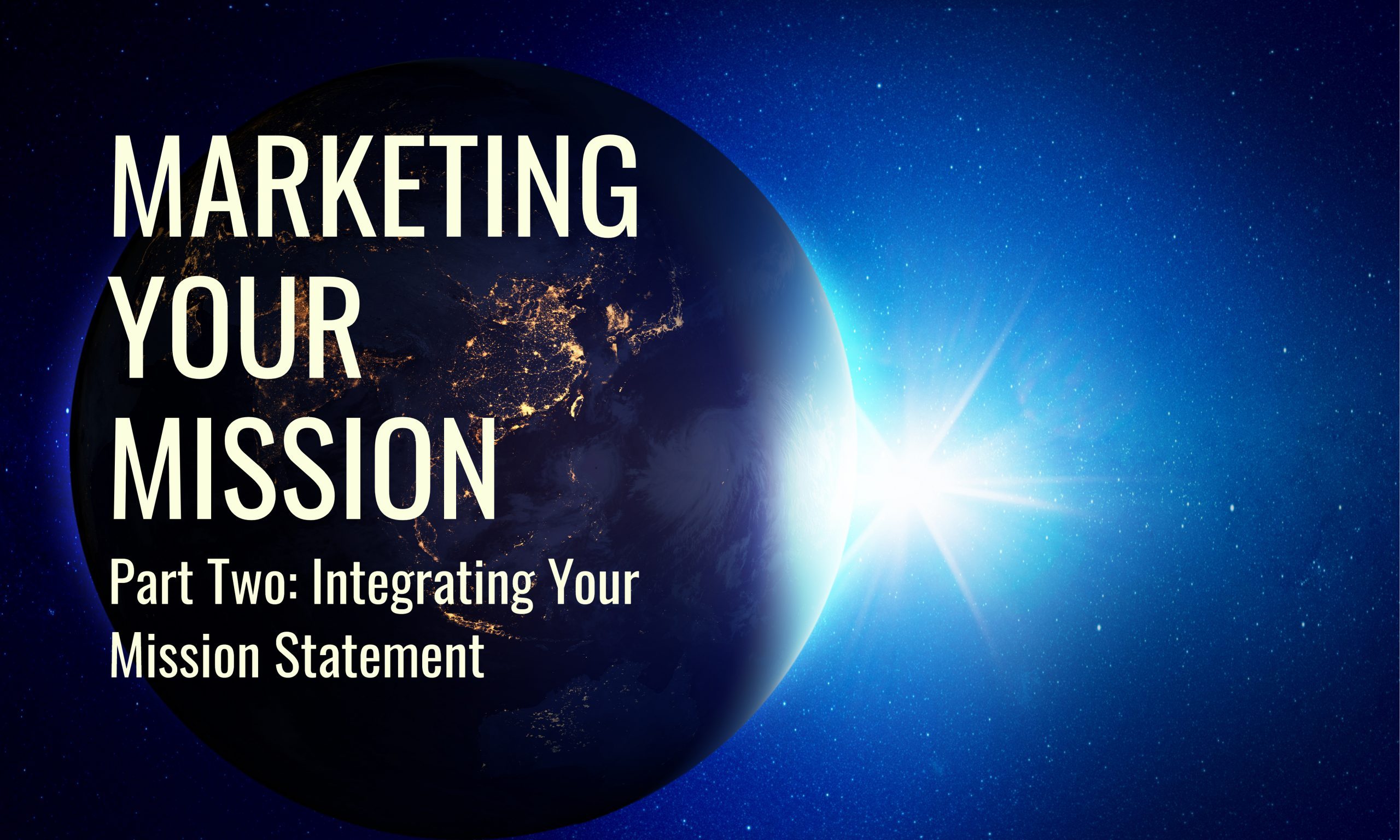Marketing Your Mission, Part Two: Integrating Your Mission Statement

All of our associations, regardless of the industries we represent, have a mission to strengthen and grow the communities we serve. But how well we connect to those missions in our day-to-day operations and long-term plans are key to fulfilling those missions. In part one of this two-part article, Marketing Executive Nikole Tenbrink, CAE, addressed the importance of developing a strong mission statement. In part two, Nikole will look at how best to integrate it into your marketing collateral.
In part one of this two-part article, we outlined the process of developing a mission statement that truly reflects your organization. Now, let’s focus on how to integrate it into your marketing and communications program. You may be tempted to feverishly insert it into every piece of collateral that exists from your website to your promotional materials right down to your business cards. However, it’s more effective to apply it with care and adapt your usage based on a specific goal and your audience.
Applying the Mission Statement in Marketing
Your mission statement guides the organization’s strategy, which, in turn, guides the marketing strategy. While all marketing activities and materials should flow back to the mission, it is not simply a matter of “copying and pasting” the mission statement right into every asset. By thoughtfully connecting your sales and marketing approach to your mission statement, you are helping members of your target audience make a personal connection to your organization and its offerings.
First, ask yourself, what you want to accomplish. Then take your mission statement and determine which part of it best applies to your answer. A compelling mission statement addresses your organization’s core purpose and the constituency you serve. If you’re in the process of developing a marketing program for a new product or service, you may be able to focus on the “purpose” part of your mission. How does that particular product fulfill your purpose? Why is that particular product important to fulfilling your mission? If your goal is to develop new markets or expand your membership structure, you may primarily focus on constituencies. Who (or who else) will benefit from your organization’s mission? Furthermore, how will different groups of constituencies benefit?
Adapting Your Mission Statement
Different platforms necessitate different applications of your mission. Much of digital marketing — think ads, emails and social media — is best accomplished with succinct messaging and impactful graphics. There won’t be much physical space (or much attention span) for a mission statement. Other marketing opportunities, such as webpages and brochures, contain more real estate for slightly longer messaging (though it’s never recommended to ever be too “wordy” in marketing).
How This Looks in Action:
When the Risk Management Society (RIMS) launched its certification program in 2016, it fully supported their mission: “To educate, engage and advocate for the global risk community.”
When the marketing assets were developed, the messaging focused on the many ways an individual risk professional would benefit from attaining the credential. Education is a core part of the RIMS mission, as well as a core part of the certification program. Promotional materials (brochures, webpages, ads, emails, etc.) incorporated the educational aspect, tying the certification program back to the mission without overusing the full mission statement. (Visit www.rims.org/certification to view directly.)
As demonstrated by the RIMS certification example above, you can connect your mission to a product or service without actually stating the mission in its entirety. Most associations have multiple offerings and serve multiple constituencies. It is critical to determine the unique message that best fits a particular product or audience to accomplish your goal. Don’t be afraid to trim your mission statement down for a specific use, or to use keywords that make an impact. As an alternative, you can always paraphrase to make it more succinct. Ultimately, as long as the meaning of the mission is conveyed, it’s suitable to be creative in your marketing message.
Your Mission and External Factors
It can be very comfortable to let your association and its mission exist in a bubble. However, as we have seen with the COVID-19 pandemic, external factors can have a major impact on how associations operate. Now is an opportune time to reassess how your mission encompasses the current events and circumstances that are most definitely affecting your constituents.
Review your product portfolio to ensure that each product/service that you expend resources on is still relevant in today’s world. How can your mission and your offerings support the “new normal?” Ultimately, your mission and how you use it should be adaptable to both internal and external factors.

Nikole Tenbrink- Director, Marketing and Business Development
IES, Illuminating Engineering Society
Nikole has served as a member of the Professionals for Association Revenue Leadership Advisory Board (LAB) since it's inception in 2019. Prior to joining IES, Nikole served as the Vice President of Membership and Marketing for The Risk Management Society (RIMS). Recently CAE certified, Nikole says success is “ensuring that value is delivered in exchange for any revenue generated.”